14.05.2022
Coverage Set for NASA’s Boeing OFT-2 Briefings, Events, Broadcast
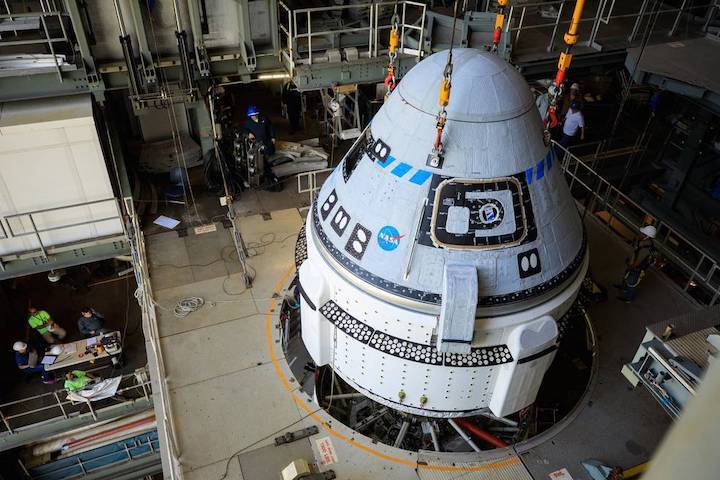
NASA will provide coverage of the upcoming prelaunch, launch, and docking activities for the agency’s Boeing Orbital Flight Test-2 (OFT-2) to the International Space Station. Scheduled to launch at 6:54 p.m. EDT on Thursday, May 19, OFT-2 is the second uncrewed flight for Boeing’s CST-100 Starliner spacecraft as part of NASA’s Commercial Crew Program.
The Starliner spacecraft will launch on a United Launch Alliance (ULA) Atlas V rocket from Space Launch Complex-41 at Cape Canaveral Space Force Station in Florida. About 31 minutes after launch, the Starliner will reach its preliminary orbit. It is scheduled to dock to the space station at 7:10 p.m. on Friday, May 20. Prelaunch activities, launch, and docking will air live on NASA Television, the NASA app, and the agency’s website.
The spacecraft will carry more than 500 pounds of NASA cargo and crew supplies to the space station and return to Earth with nearly 600 pounds of cargo, including reusable Nitrogen Oxygen Recharge System (NORS) tanks that provide breathable air to station crew members.
OFT-2 will demonstrate the end-to-end capabilities of the Starliner spacecraft and Atlas V rocket, from launch to docking to a return to Earth in the desert of the western United States. The uncrewed flight test will provide valuable data toward NASA certifying Boeing’s crew transportation system for regular flights with astronauts to and from the space station.
The deadline has passed for media accreditation for in person coverage of this launch. More information about media accreditation is available by emailing: ksc-media-accreditat@mail.nasa.gov. A copy of NASA’s media accreditation policyis online.
NASA’s Boeing OFT-2 coverage is as follows and all times are subject to change based on mission operations (all times Eastern):
Tuesday, May 17
Noon – Prelaunch news conference on the NASA TV public channel (or no earlier than one hour after completion of the Launch Readiness Review):
- Steve Stich, manager, NASA’s Commercial Crew Program
- Joel Montalbano, manager, NASA’s International Space Station Program
- Mark Nappi, vice president and program manager, Boeing Commercial Crew Program
- Gary Wentz, vice president, Government and Commercial Programs, ULA
- Will Ulrich, launch weather officer, U.S. Space Force, 45th Weather Squadron, Space Launch Delta 45
Media may ask questions in-person and via phone. Limited auditorium space will be available for in-person participation. For the dial-in number and passcode, please contact the newsroom at NASA’s Kennedy Space Center in Florida no later than noon on Tuesday, May 17, at: ksc-newsroom@mail.nasa.gov.
Wednesday, May 18
1 p.m. – NASA leadership media briefing on NASA TV, with the following participants:
- Bob Cabana, NASA associate administrator
- Janet Petro, director, NASA’s Kennedy Space Center
- Kathryn Lueders, associate administrator, Space Operations Mission Directorate
- NASA astronaut Suni Williams
- NASA astronaut Butch Wilmore
- NASA astronaut Mike Fincke
Media may ask questions in-person and via phone. Limited auditorium space will be available for in-person participation. For the dial-in number and passcode, please contact the Kennedy newsroom no later than noon Wednesday, May 18, at: ksc-newsroom@mail.nasa.gov.
Thursday, May 19
6 p.m. – NASA TV launch coverage begins. NASA TV will have continuous coverage through Starliner orbital insertion.
9 p.m. (approximately) – Postlaunch news conference on NASA TV, with the following participants:
- Kathryn Lueders, associate administrator, NASA Space Operations Mission Directorate
- Steve Stich, manager, NASA’s Commercial Crew Program
- Joel Montalbano, manager, NASA’s International Space Station Program
- Mark Nappi, vice president and program manager, Boeing Commercial Crew Program
- John Elbon, chief operating officer, United Launch Alliance
Media may ask questions in-person and via phone. Limited auditorium space will be available for in-person participation. For the dial-in number and passcode, please contact the Kennedy newsroom no later than 8 p.m. Thursday, May 19, at: ksc-newsroom@mail.nasa.gov.
Friday, May 20
3:30 p.m. – NASA TV rendezvous and docking coverage begins
7:10 p.m. (approximately) – Docking
Saturday, May 21
11:30 a.m. – NASA TV hatch opening and welcoming remarks coverage begins
11:45 a.m. (approximately) – Hatch opening and welcoming remarks
NASA TV Launch Coverage
NASA TV live coverage will begin at 6 p.m. For NASA TV downlink information, schedules, and links to streaming video, visit:
Audio only of the news conferences and launch coverage will be carried on the NASA “V” circuits, which may be accessed by dialing 321-867-1220, -1240, -1260 or -7135. On launch day, "mission audio," countdown activities without NASA TV launch commentary, will be carried on 321-867-7135.
On launch day, a “clean feed” of the launch without NASA TV commentary will be carried on the NASA TV media channel. Launch also will be available on local amateur VHF radio frequency 146.940 MHz (K4GCC, Launch Information Service And Amateur Television System) and UHF radio frequency 444.925 MHz (N1KSC, Kennedy Space Center Amateur Radio Club), heard within Brevard County on the Space Coast.
NASA Website Launch Coverage
Launch day coverage of NASA’s Boeing OFT-2 will be available on the agency’s website. Coverage will include livestreaming and blog updates beginning no earlier than 6 p.m. Thursday, May 19, as the countdown milestones occur. On-demand streaming video and photos of the launch will be available shortly after liftoff. For questions about countdown coverage, contact the Kennedy newsroom at: 321-867-2468. Follow countdown coverage on our launch blog at:
http://blogs.nasa.gov/commercialcrew
Public Participation
Members of the public can register to attend this launch virtually. NASA’s virtual guest program for this mission also includes curated launch resources, notifications about related opportunities or changes, and a stamp for the NASA virtual guest passport following a successful launch.
Engage kids and students in virtual and hands-on activities that are both family-friendly and educational through Next Gen STEM Commercial Crew.
Watch and Engage on Social Media
Stay connected with the mission on social media via Twitter, Facebook, and Instagram using the hashtag #Starliner. Follow and tag these accounts:
Twitter: @NASA, @Commercial_Crew, @Space_Station, @NASAKennedy
Facebook: NASA, NASACommercialCrew, ISS Facebook, Kennedy Space Center
Instagram: NASA, ISS Instagram, NASAKennedy
NASA will provide a live video feed of Space Launch Complex-41 approximately 6 hours prior to the planned liftoff of the OFT-2 mission. Pending unlikely technical issues, the feed will be uninterrupted until the prelaunch broadcast begins on NASA TV, approximately one hour prior to launch.
Once the feed is live, it will be available at:
http://youtube.com/kscnewsroom
Make sure to check out NASA en español on Twitter, Instagram, Facebook, and YouTube for more Spanish-language coverage on OFT-2.
Para obtener información sobre cobertura en español en el Centro Espacial Kennedy o si desea solicitar entrevistas en español, comuníquese con Antonia Jaramillo, 321-501-8425, antonia.jaramillobotero@nasa.gov.
NASA’s Commercial Crew Program is delivering on its goal of safe, reliable, and cost-effective transportation to and from the International Space Station from the United States through a partnership with American private industry. This partnership is changing the arc of human spaceflight history by opening access to low-Earth orbit and the International Space Station to more people, more science, and more commercial opportunities. The space station remains the springboard to NASA's next great leap in space exploration, including future missions to the Moon and, eventually, to Mars.
Quelle: NASA ---- Update: 19.05.2022 .
NASA, Boeing ready for long-delayed, high-stakes Starliner test flight
Running years late, Boeing’s Starliner crew capsule program is poised for a crucial unpiloted test flight to the International Space Station set for launch Thursday, a do-over of an abbreviated 2019 demo mission that has cost the aerospace contractor nearly $600 million.
The Starliner crew capsule is scheduled for liftoff on the Orbital Flight Test 2, or OFT-2 mission, from Cape Canaveral at 6:54 p.m. EDT (2254 GMT) Thursday on top of a United Launch Alliance Atlas 5 rocket.
ULA, Boeing, and NASA, which oversees the Starliner commercial crew contract, gave a green light Tuesday to proceed with final launch preparations. Managers convened for a launch readiness review and gave a “go” to press on with the mission.
The review “went really well,” said Steve Stich, NASA’s commercial crew program manager. “It was short. It was very clean. There are really no issues that ULA, Boeing, or NASA are working for the launch coming up.”
The test flight is intended to gather data and prove the readiness of Boeing’s Starliner spacecraft to transport astronauts to and from the space station. It’s a redo of the OFT-1 mission in December 2019, which was cut short by software woes that caused the Starliner capsule to burn through propellant shortly after launch.
Developed in a public-private partnership, the Starliner spacecraft will give NASA a second human-rated capsule capable of ferrying astronauts to and from the space station, alongside SpaceX’s Dragon spaceship, which launched with a crew for the first time in May 2020.
The problems on the 2019 flight prevented the Starliner spacecraft from reaching the space station, and Boeing commanded the capsule to re-enter the atmosphere and land in New Mexico two days later.
After rewriting parts of the Starliner software code and running it through more extensive testing, Boeing and NASA moved forward with preparations for the OFT-2 mission — a test flight added to the Starliner schedule at Boeing’s expense.
The spacecraft was rolled to the launch pad last August at Cape Canaveral atop its Atlas 5 rocket. But on the morning of the scheduled launch, tests revealed 13 stuck isolation valves in the Starliner propulsion system.
Boeing and NASA agreed to remove the Starliner from the Atlas 5 rocket and postpone the mission to investigate the valve problem. Boeing says testing showed corrosion inside the valves — caused by a chemical reaction between moisture, nitrogen tetroxide propellant, and the valves’ aluminum housing — caused the components to stick inside the plumbing on the spacecraft’s service module.
For the OFT-2 mission, engineers improved seals on the valves to prevent moisture intrusion, and added nitrogen purges to keep atmospheric humidity out of the propulsion system. Boeing also swapped the balky service module from last summer’s launch attempt with a brand new propulsion section, with a fresh set of valves and thrusters.
The company says it is considering design changes to the oxidizer isolation valves — potentially reducing the amount of aluminum in the valve housing — for future Starliner missions, but officials are “confident” in the mitigations introduced to prevent moisture intrusion before the OFT-2 launch.
Boeing took an accounting charge of $595 million to pay for the delays, rework, and the unplanned OFT-2 mission. NASA’s fixed-price contracts for the Starliner commercial crew program total about $5 billion, an arrangement where the government and contractor shared costs in developing the spacecraft.
NASA signed a similar, less expensive contract with SpaceX in 2014 for development, testing, and operations of the human-rated Dragon spacecraft. After running into its own series of shorter delays, SpaceX launched its first astronaut mission to the space station in 2020.
While Boeing has wrestled with delays on the Starliner program, SpaceX has notched seven crew missions on its fleet of reusable Dragon capsules — five for NASA and two for private customers.
Boeing’s contract with NASA covers the unpiloted OFT-1 and OFT-2 missions, and a Crew Flight Test that could blast off with a team of two or three astronauts late this year or early next year, assuming a successful outcome to the upcoming demo flight. After the test flights are accomplished, NASA has booked operational six crew rotation fights with Boeing using the Starliner spacecraft.
Mark Nappi, Boeing’s Starliner program manager, said the delays haven’t zapped the focus of the Starliner team.
“This is very difficult to build and develop and launch this type of vehicle, so they are laser focused on doing this right, and that’s really where their minds are,” Nappi said, adding that Boeing wants to make the program the “safest and best quality possible.”
“When we launch, we launch,” Nappi said.
With the launch readiness review complete, ULA’s ground team is preparing to roll the 172-foot-tall (52.4-meter) Atlas 5 rocket out of the 30-story Vertical Integration Facility at 10 a.m. EDT (1400 GMT) Wednesday. Two “trackmobile” units will carry the Atlas 5 and the Starliner spacecraft on rail tracks for the 1,800-foot (550-meter) journey from the VIF to pad 41 at Cape Canaveral.
Teams stacked the Atlas 5 rocket’s core stage, two strap-on solid rocket boosters, Centaur upper stage, and the Starliner capsule inside the VIF over last few weeks.
Once on the launch pad, the Atlas 5 and its mobile launch platform will be connected to auto couplers to load propellants into the rocket. Kerosene fuel will be pumped into the first stage Wednesday afternoon, setting up for the start of the launch countdown at 7:34 a.m. EDT (1134 GMT) Thursday.
The launch team will load cryogenic propellants into the Atlas 5 beginning early Thursday afternoon, followed by an extended hold. On future missions carrying astronauts, the crew members will board the Starliner spacecraft through the capsule’s hatch during the four-hour pause in the countdown.
The Starliner spacecraft set for launch Thursday on Boeing’s OFT-2 mission won’t have an astronaut crew on-board. An instrumented test dummy named for “Rosie the Riveter” from World War II sits in the commander’s seat on the spacecraft.

The Starliner will also carry more than 500 pounds (227 kilograms) of food and other supplies for the seven-person crew on the space station, according to NASA. At the end of the mission, the spacecraft is slated to return to Earth with more than 600 pounds (272 kilograms) of cargo.
There’s a 70% chance of favorable weather for liftoff of the Atlas 5 rocket with the Starliner spacecraft Thursday. The primary weather concerns are associated with thunderstorms that could fire up west of Cape Canaveral. Anvil clouds at the top of the storm cells could blow back toward the launch site, creating a threat of lightning that could be triggered by the rocket as it climbs through the atmosphere.
On Friday, the backup launch opportunity, there is a 40% chance of good weather for launch, with higher chances of thunderstorms in the launch pad area.
The Starliner team will also assess wind and sea conditions along the Atlas 5’s flight corridor northeast from Cape Canaveral. The capsule could splash down in the Atlantic Ocean along the offshore flight path if an emergency triggers a launch abort, in which the Starliner’s abort engines would propel the ship away from the Atlas 5 rocket.
The capsule’s launch abort system will be active for the first time on the OFT-2 mission. It operated in a “shadow” mode on the OFT-1 launch in 2019, collecting data for analysis by engineers after the flight.
For a Starliner mission with astronauts on-board, the abort weather constraints would factor in to the decision on whether to proceed for a launch. On this unpiloted test flight, teams will monitor the conditions but would not hold the launch if they were out of limits.
If the OFT-2 mission doesn’t take off Thursday, the next opportunity to launch would be Friday at 6:31 p.m. EDT (2231 GMT). The launch times are determined by when Earth’s rotation brings the launch pad at Cape Canaveral under the space station’s flight path.
After liftoff, the Atlas 5’s two strap-on boosters and Russian-made core engine will generate 1.6 million pounds of thrust to send the Starliner spacecraft toward space. Once their roles are complete, the boosters and core stage will jettison to fall into the Atlantic, leaving two hydrogen-fueled RL10 engines on the Centaur upper stage to propel the Starliner spacecraft on an arcing trajectory just shy of the velocity required to enter a stable orbit around Earth.
The Atlas 5 is programmed to fly a flatter, less steep trajectory that it flies on typical satellite delivery missions, increasing opportunities for the Starliner crew capsule to safely escape from the rocket in the event of a failure.
Once it is flying free of the Centaur upper stage, the Starliner’s four on-board maneuvering will finish the work of placing the spacecraft into orbit with a burn about 31 minutes after liftoff. That burn is the first of multiple engine firings to guide the Starliner spacecraft toward an automated docking at the space station’s Harmony module.
The orbital linkup is scheduled for 7:10 p.m. EDT (2310 GMT) Friday, assuming the OFT-2 mission takes off Thursday.
The astronauts on the space station will open hatches and enter the Starliner spacecraft Saturday, remove the cargo inside the pressurized crew cabin, and perform communications checkouts in the cockpit.
If all goes according to plan, and assuming good weather at the landing zone, the Starliner would undock from the space station May 25 and head for re-entry, targeting a parachute-assisted, airbag-cushioned touchdown at White Sands Space Harbor in New Mexico. Quelle: SN ---- Update: 20:50 MESZ 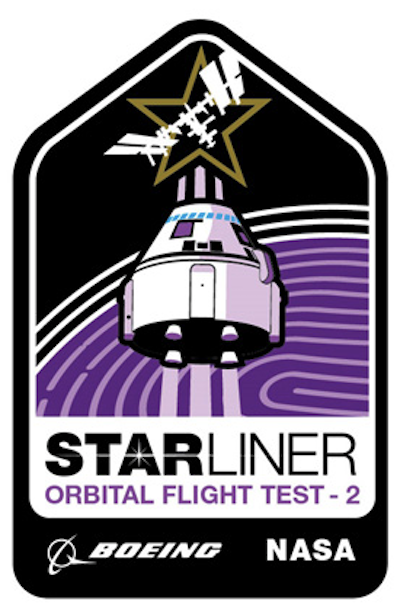
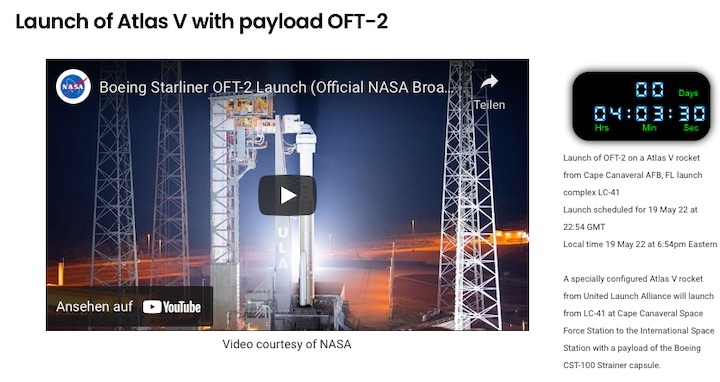
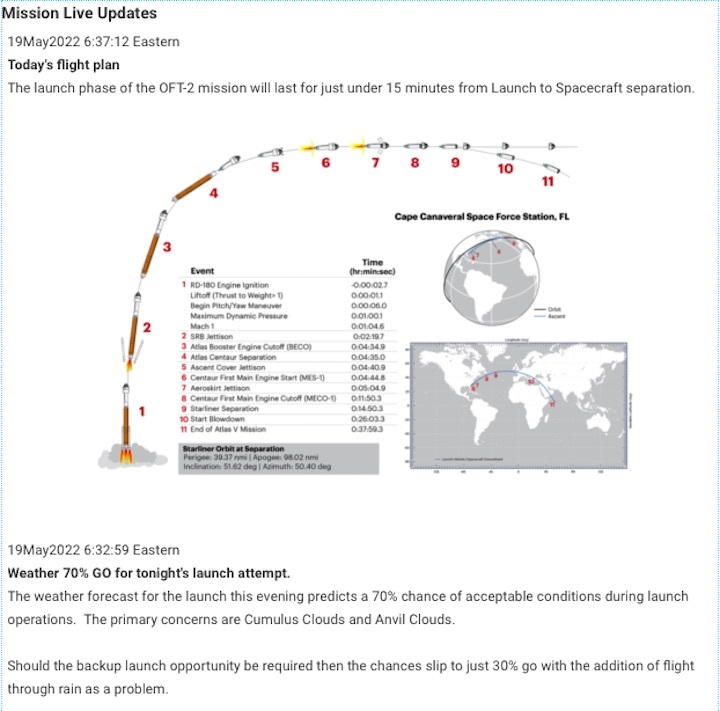
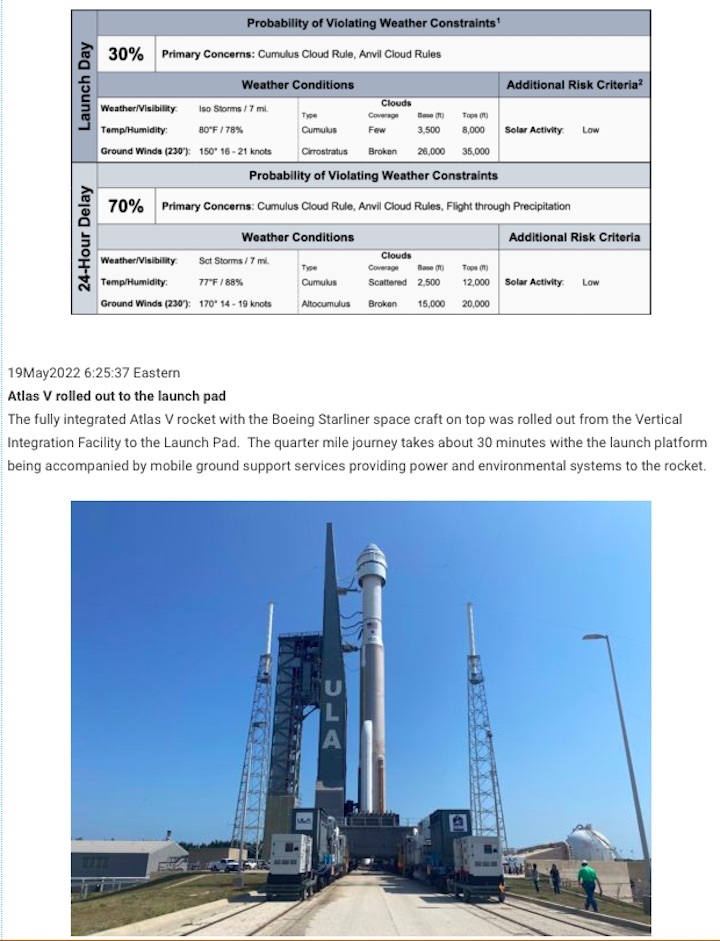
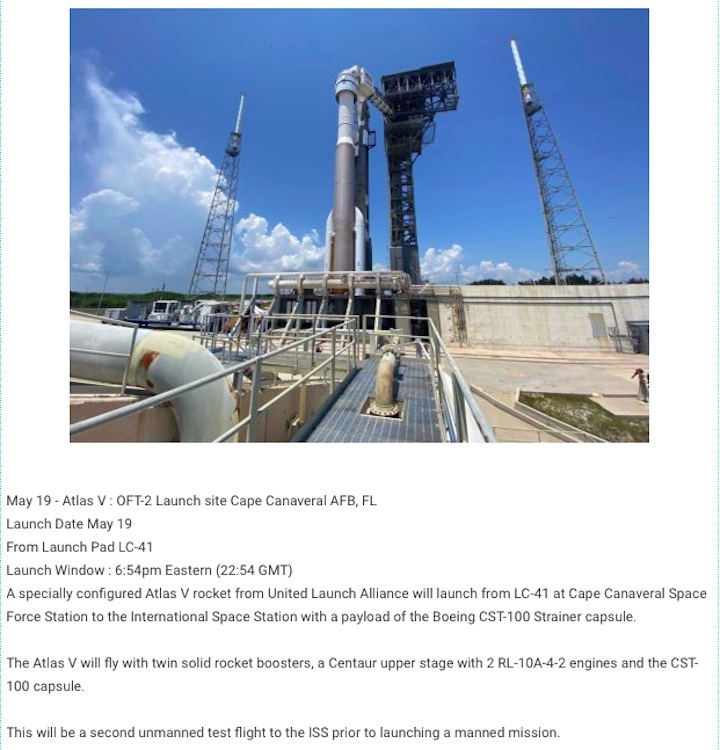 Quelle: AS +++
Quelle: AS +++
Starliner Launches to Space Station on Uncrewed Flight Test for NASA 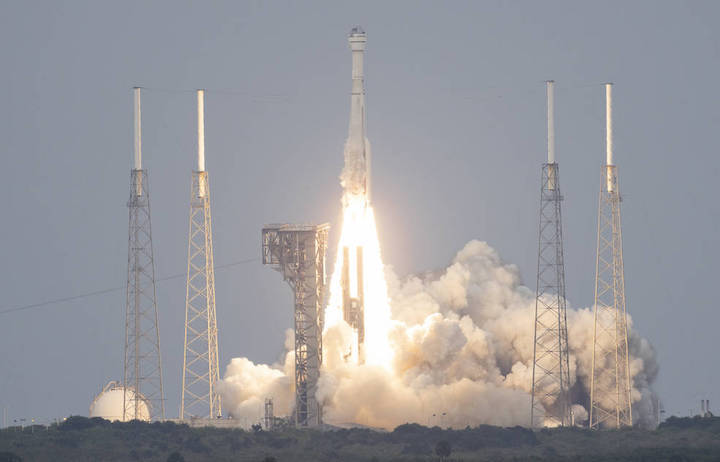
Boeing’s CST-100 Starliner is in orbit, heading for the International Space Station following launch Thursday of the next-generation spacecraft on a United Launch Alliance (ULA) Atlas V rocket on a mission designed to test the end-to-end capabilities of the crew-capable system as part of NASA’s Commercial Crew Program.
Starliner lifted off on NASA’s Boeing Orbital Flight Test-2 (OFT-2) at 6:54 p.m. EDT from Space Launch Complex-41 at Cape Canaveral Space Force Station in Florida. Following an orbital insertion burn 31 minutes later, Starliner was on its way for a rendezvous and docking with the space station.
“I am so proud of the NASA, Boeing and United Launch Alliance teams who have worked so hard to see Starliner on its way to the International Space Station,” said NASA Administrator Bill Nelson. “Through adversity, our teams have continued to innovate for the benefit of our nation and all of humanity. I look forward to a successful end-to-end test of the Starliner spacecraft, which will help enable missions with astronauts aboard.”
Launch and orbital insertion are major milestones for the company’s second uncrewed flight, bringing the U.S. closer to having two independent crew systems flying missions to and from the space station.
Starliner is scheduled to dock to the forward port of the station’s Harmony module about 7:10 p.m. Friday, May 20. After a successful docking, the crew of Expedition 67 will open Starliner’s hatch about 11:45 a.m. Saturday, May 21. Coverage of docking and hatch opening will air live on NASA Television, the NASA app, and the agency’s website.
“I am incredibly grateful to our NASA, Boeing, and United Launch Alliance teams that have demonstrated persistence, resolve, and dedication to ensuring we were ready for launch today and for this flight test,” said Kathryn Lueders, NASA associate administrator for space operations at NASA Headquarters in Washington. “We have learned so much as we’ve worked together to prepare for this mission, and we look forward to watching the spacecraft arrive at the space station for the first time and continuing to learn and improve as we prepare to fly our astronauts on Starliner.”
For the flight test, Starliner is carrying about 500 pounds of NASA cargo and crew supplies and more than 300 pounds of Boeing cargo to the International Space Station. Following certification, NASA missions aboard Starliner will carry up to four crew members to the station, enabling the continued expansion of the crew and increasing the amount of science and research that can be performed aboard the orbiting laboratory.
OFT-2 will provide valuable data toward NASA certifying Boeing’s crew transportation system for regular flights with astronauts to and from the space station.
“We’ve learned a lot about the capability of our spacecraft and the resilience of our team since the first Starliner launch,” said Mark Nappi, vice president and program manager, Boeing Commercial Crew Program. “We still have a lot of operational testing ahead as we prepare to rendezvous with the space station, but we’re ready to demonstrate the system we’ve worked so hard on is capable of carrying astronauts to space.”
ULA controlled the launch of the Atlas V rocket from its Atlas Spaceflight Operations Center in Cape Canaveral. As Starliner ascended into space, Boeing commanded the spacecraft from its mission control center at NASA’s Kennedy Space Center in Florida. Boeing and ULA teams also provided support to controllers from Kennedy Space Center and Colorado, respectively, throughout the countdown to launch. NASA teams will monitor space station operations throughout the flight from Mission Control Center at the agency’s Johnson Space Center in Houston.
“We are proud of our partnership role with Boeing in NASA’s Commercial Crew Program and want to thank our mission partners as this is truly a collective accomplishment,” said Tory Bruno, president and CEO, United Launch Alliance. “The successful launch today marks the first critical step toward the future of humans spaceflight onboard an Atlas V and we look forward to the remainder of the mission and to safely flying astronauts in the future.”
Starliner is scheduled to depart the space station Wednesday, May 25, when it will undock and return to Earth, with a desert landing in the western U.S. The spacecraft will return with more than 600 pounds of cargo, including Nitrogen Oxygen Recharge System reusable tanks that provide breathable air to station crew members. The tanks will be refurbished on Earth and sent back to station on a future flight. Quelle: NASA
+++ATLAS V SUCCESSFULLY LAUNCHES STARLINER OFT-2
A United Launch Alliance (ULA) Atlas V rocket launched Boeing's Crew Space Transportation (CST)-100 Starliner spacecraft on its Orbital Flight Test-2 (OFT-2) to the International Space Station. OFT-2 is the second uncrewed flight of the Starliner that will demonstrate the spacecraft's human transportation capabilities. This test flight is the last major step before the Atlas V and Boeing's Starliner capsule take American astronauts to the International Space Station as part of NASA's Commercial Crew Program.
Launch Date and Time: Thursday, May 19, 2022 at 6:54 p.m. EDT (2254 UTC) 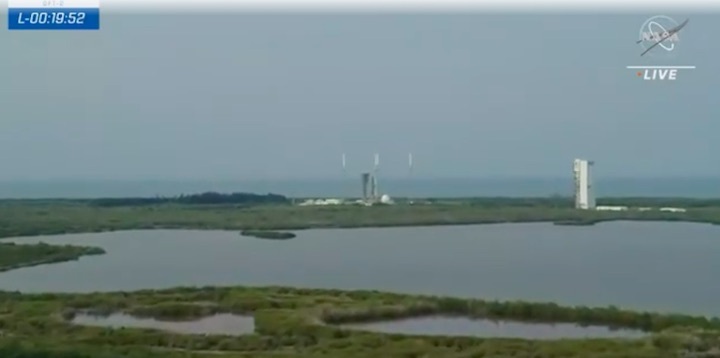
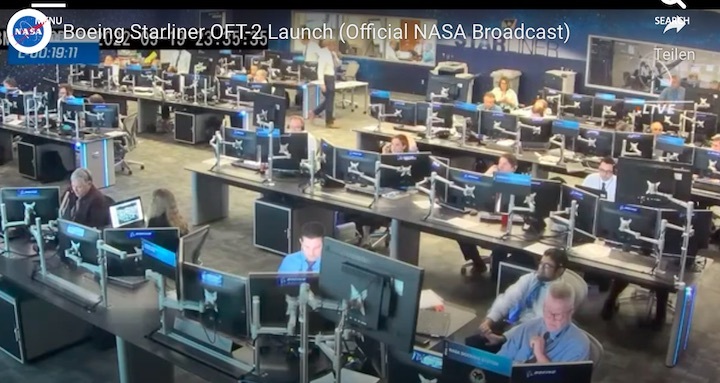
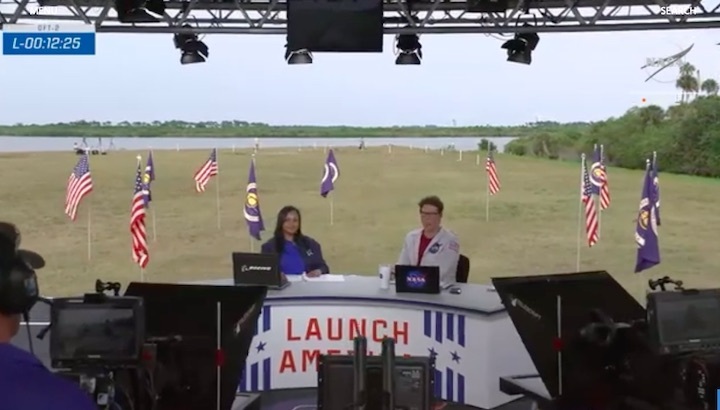
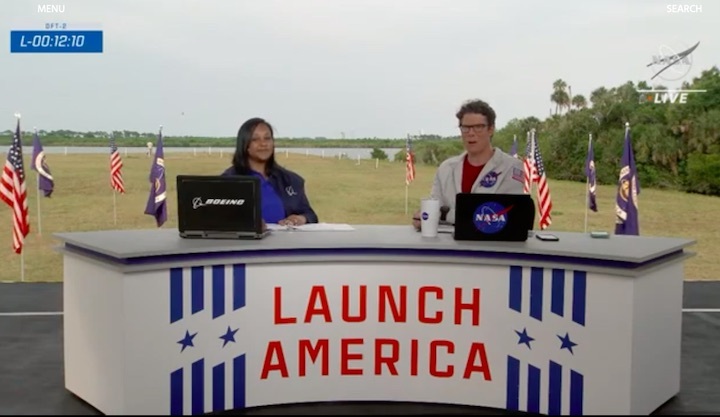
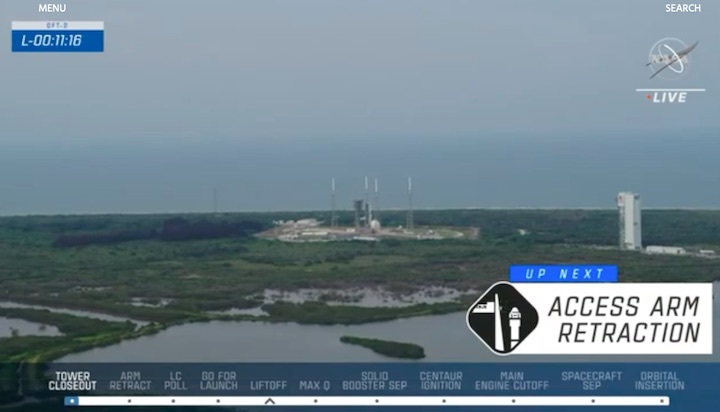
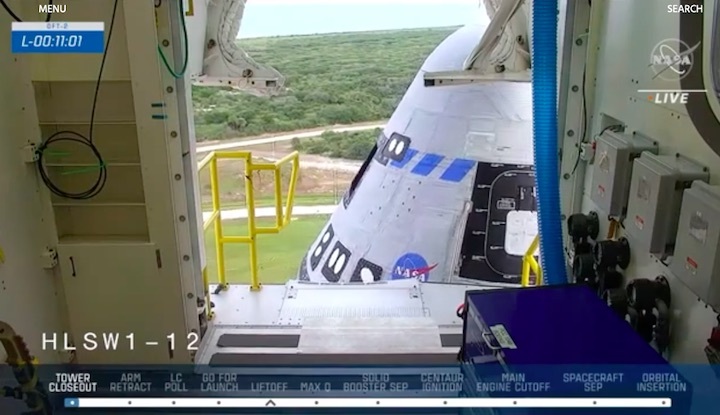
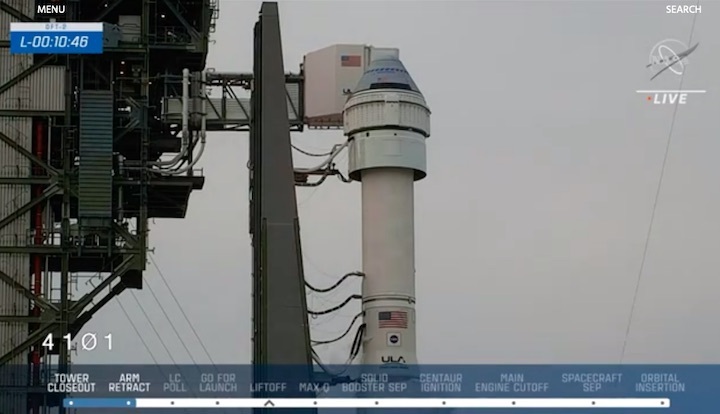
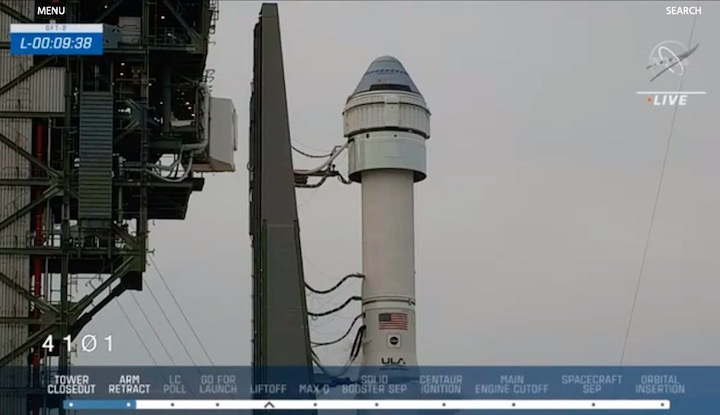
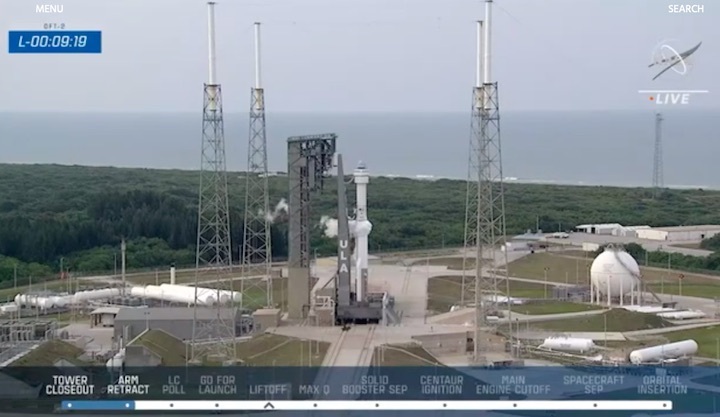
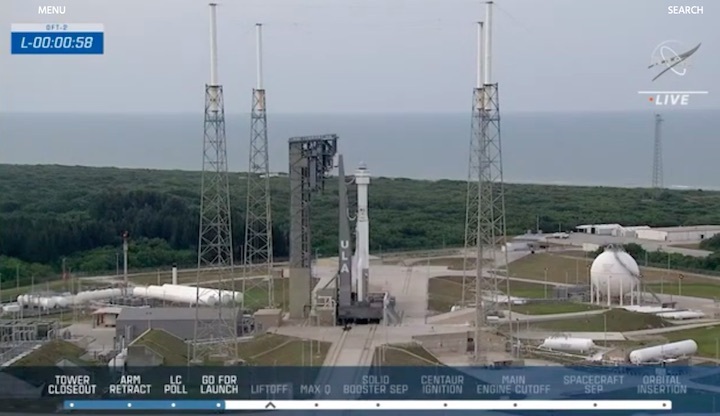
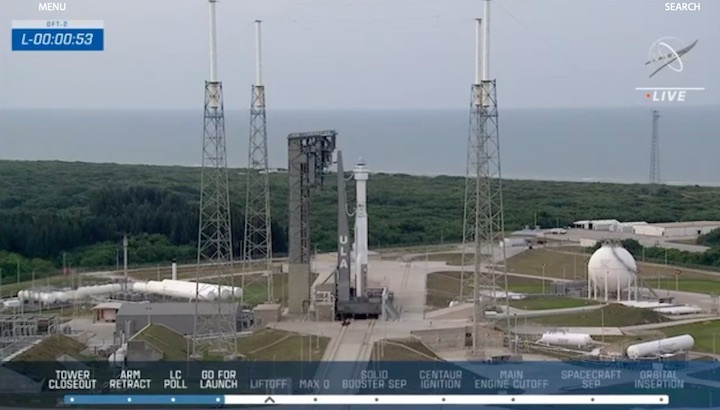
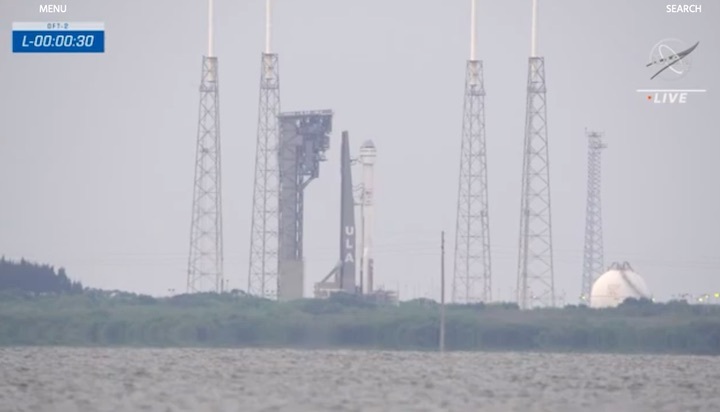
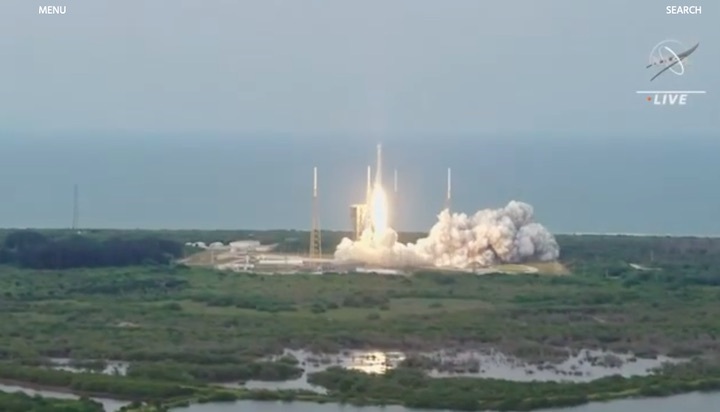

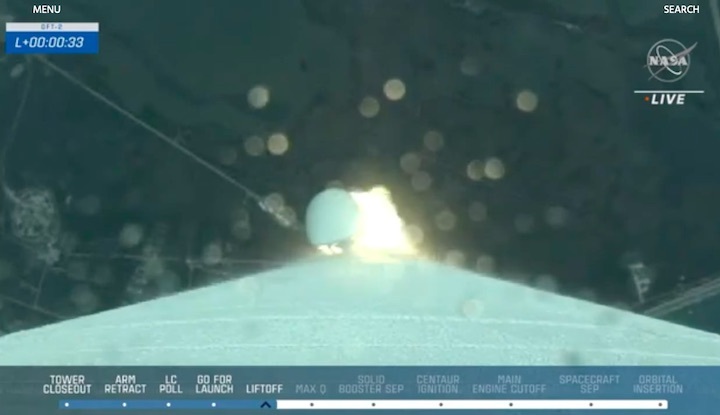
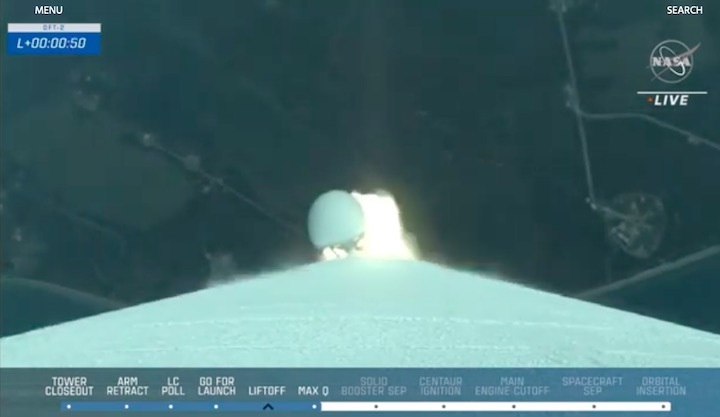
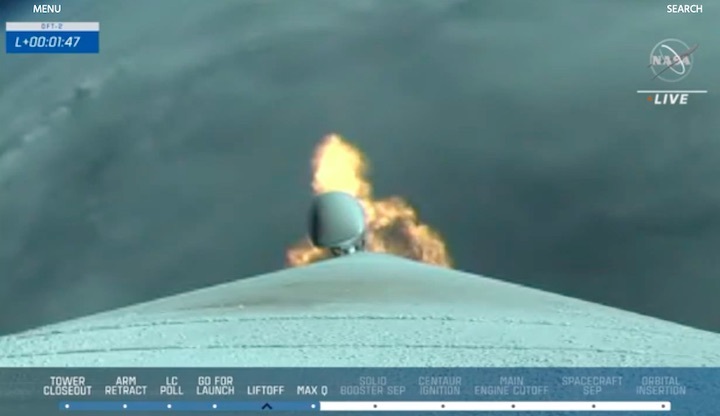
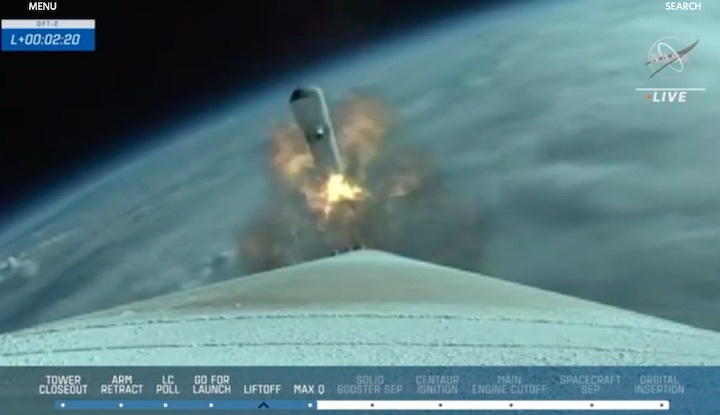
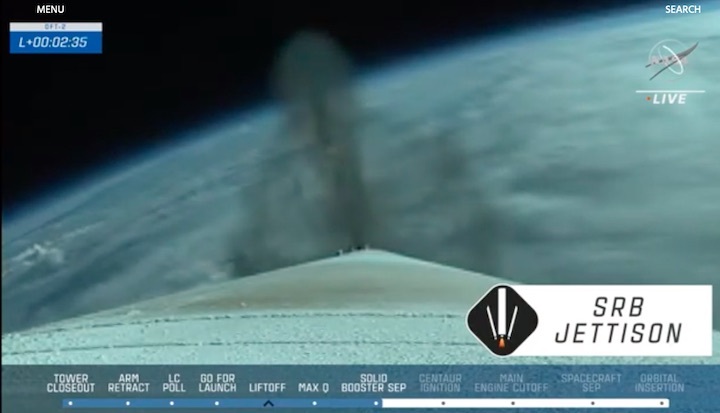
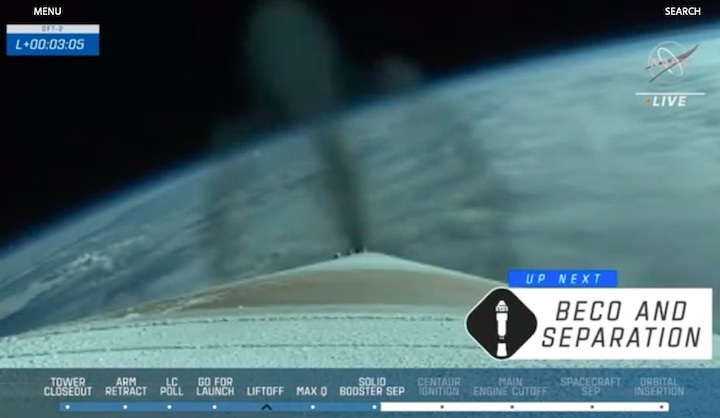
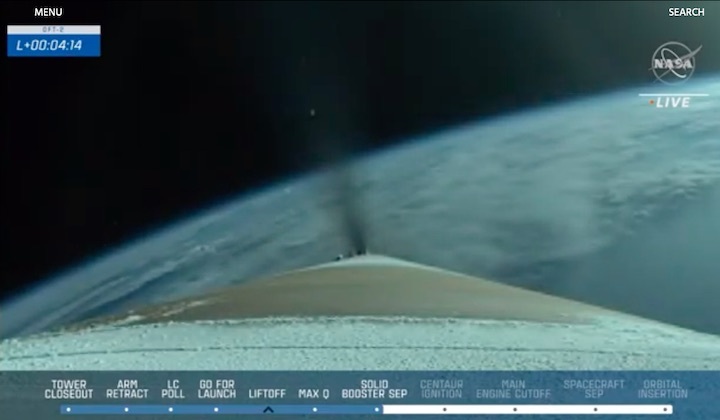
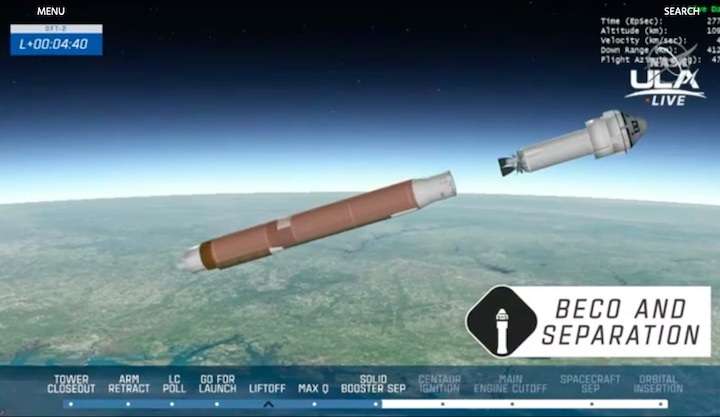
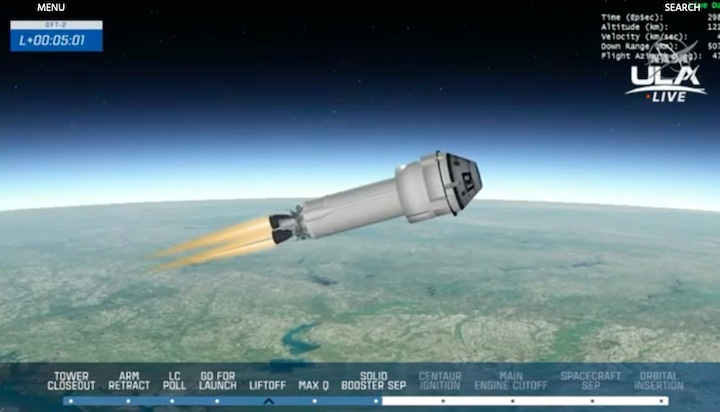
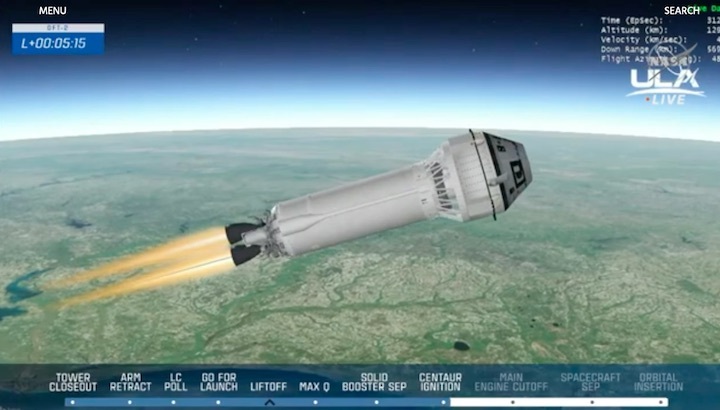
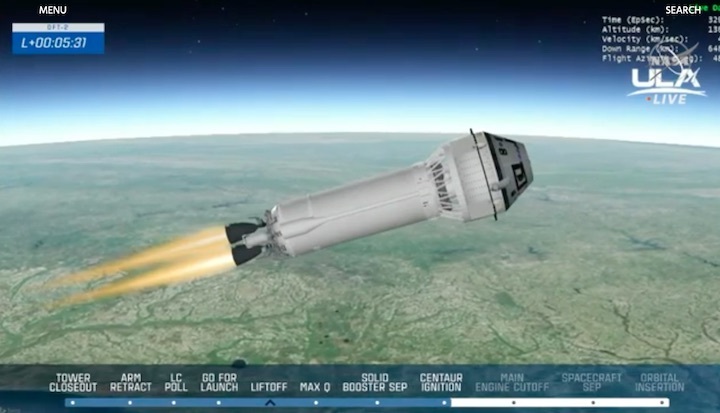
Go Atlas! Go Centaur! Go Starliner!
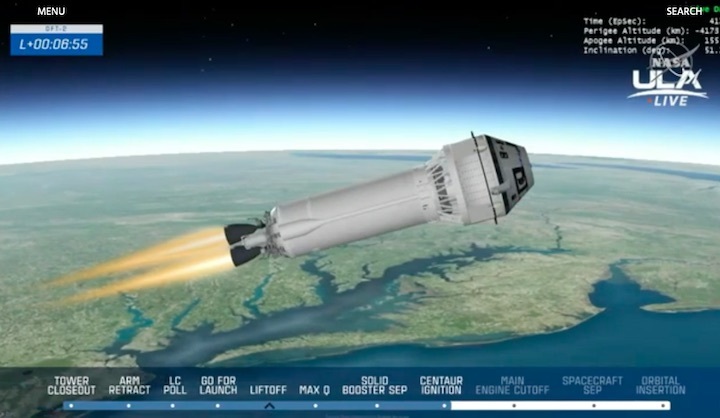
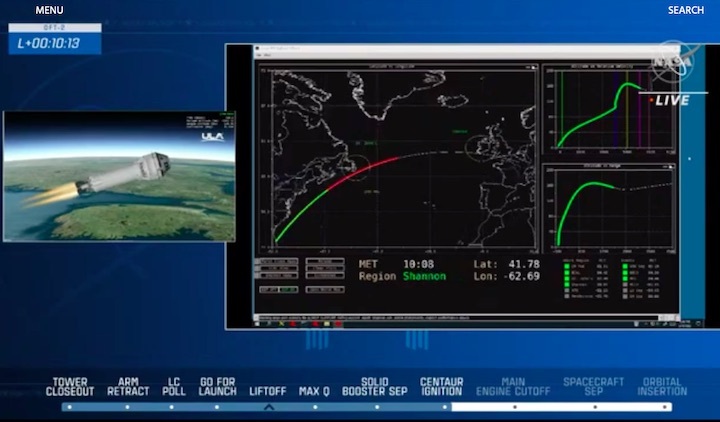
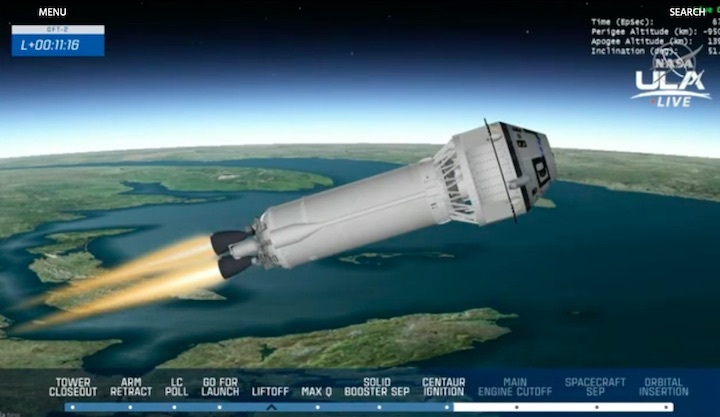
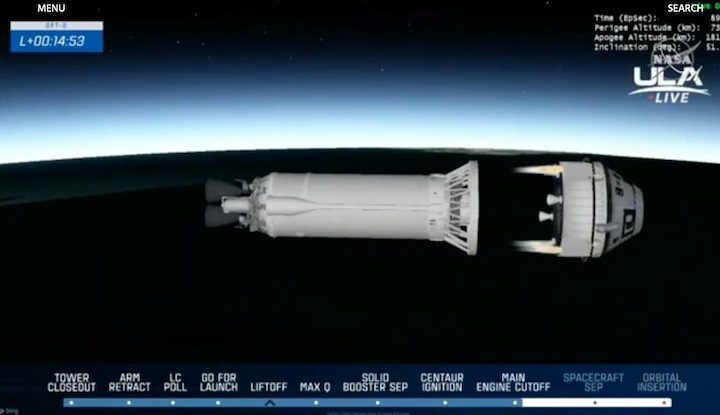
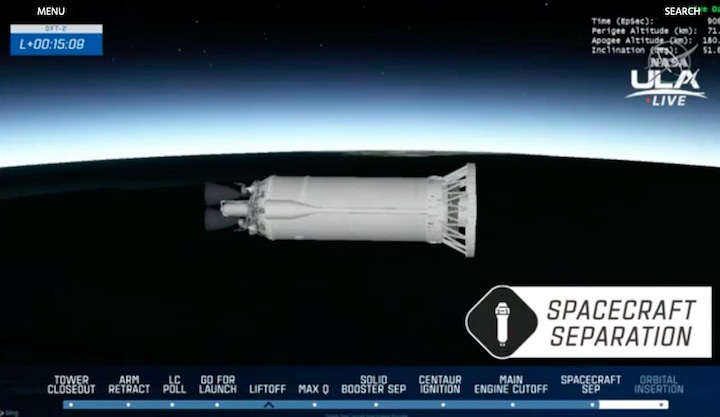
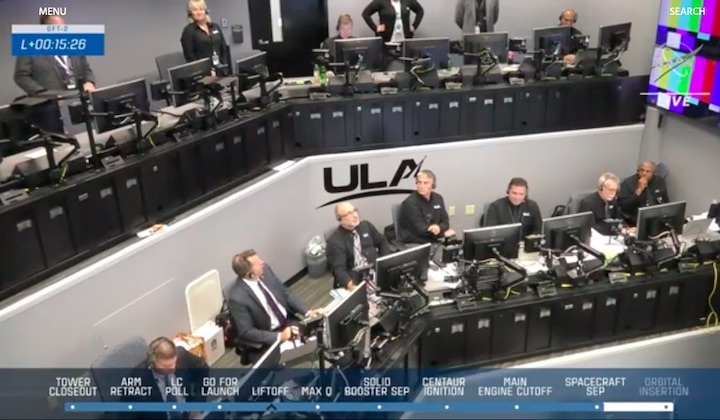
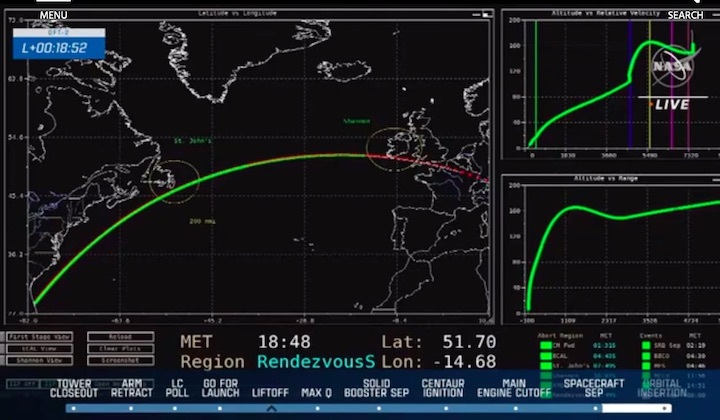
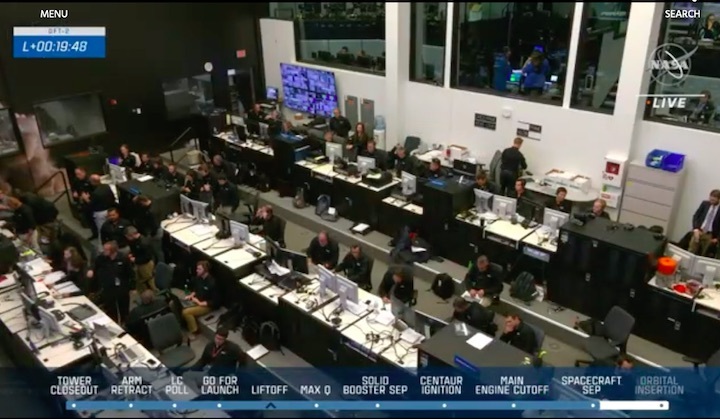
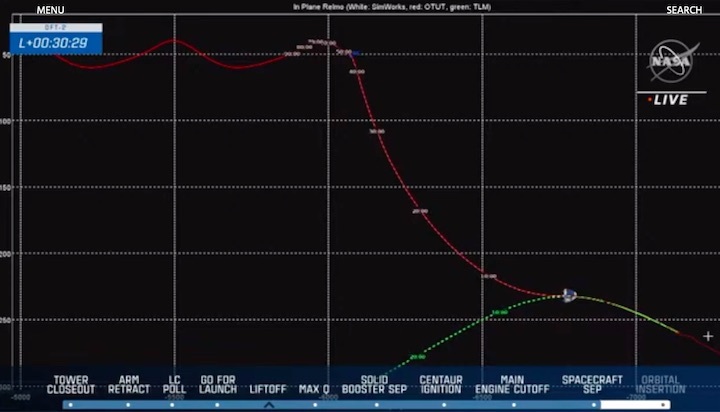
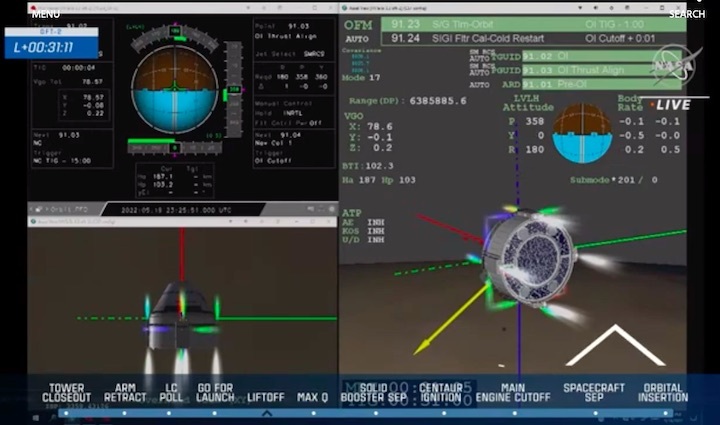
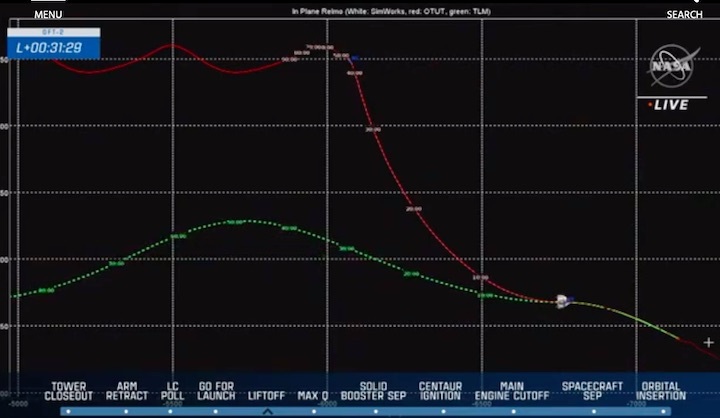
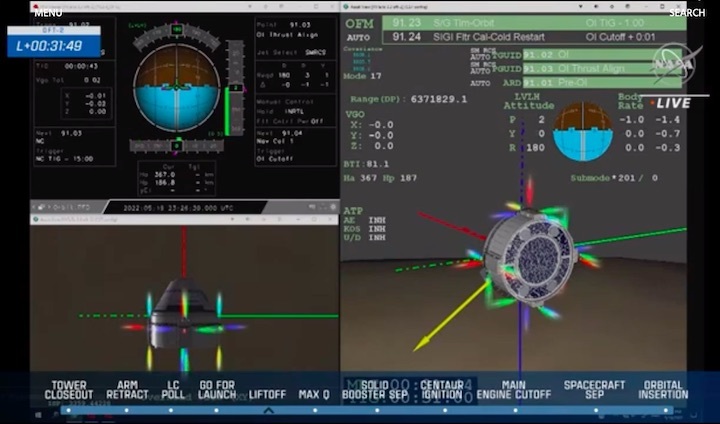
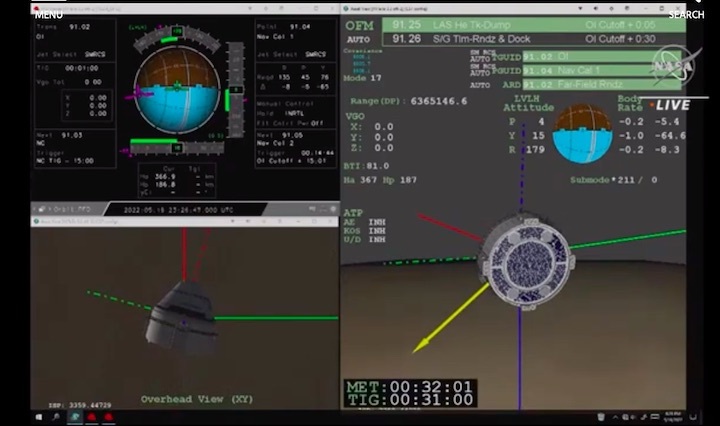
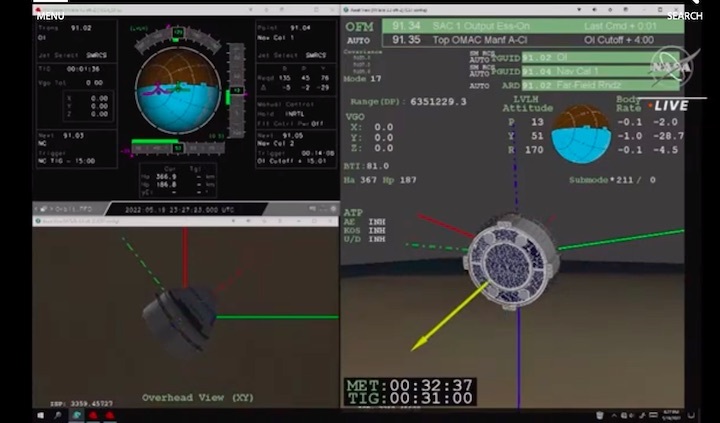
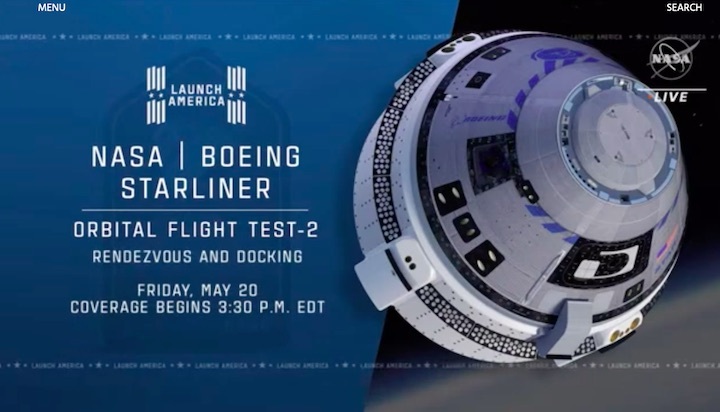 Quelle: ULA, NASA-TV
Quelle: ULA, NASA-TV

